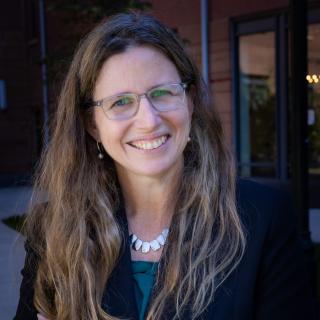More than Home Visits
Lessons from the AVANCE two-generation program
October 12, 2017
Two-generation approaches to early learning promise so much, don’t they? The idea is that at-risk children’s needs may be more effectively served when intervening with parent and child simultaneously. Home visiting programs are the most common examples, based on the idea that at-risk families may be better served by supporting their existing home structure. Research literature shows that only programs with high intensity produce more than small effects (Brooks-Gunn & Markman, 2005; Chase-Lansdale & Brooks-Gunn, 2014; Nievar, A., Van Egeren & Pollard, 2010).
Some two-generation programs go beyond home visitation to build either child or parent supports outside of their home. One example is the AVANCE Parent-Child Education Program, which invites parents and their children to a “center” for a nine-month course including:
- weekly three-hour parenting classes from September to May,
- early childhood education provided for the children of the adult participants,
- home visits throughout the period of the program (that extend and support the parenting piece),
- transportation to and from program services,
- advocacy and support.
AVANCE had for decades served mostly Hispanic or Hispanic-descent families in TX and CA, and in 2011 they partenered with culturally distinct sites, two in northeastern U.S., to assess if their program would work well with other types of families.
In the first-year, NIEER assessed implementation fidelity and cultural adaptation of the program, and we found that participants of all cultural and linguistic backgrounds reported positive experiences even though program processes were not yet fully developed. Parents described parent education sessions as opportunities for learning how to be better parents, gaining valuable content on parenting, and sharing personal experiences and issues.
In 2012 NIEER investigated the effects of AVANCE on parenting practices, knowledge, attitudes and beliefs regarding child development and child rearing. We conducted a randomized controlled trial with families of young children assigned to treatment in two community providers in the cities of Newark, New Jersey and Brooklyn, New York. We assessed 86 parents and 108 infants and toddlers in the Newark site and 69 families and 77 infants and toddlers in the Brooklyn site.
We found mothers in the program were much more likely to breastfeed, and parents in the program understood the importance of their involvement in children’s development. Parents were also more likely to understand the importance of children interacting with other adults, children playing with other children, of talking to children frequently, of having stories or books available and of having toys available (this last one being significant in statistical terms). The program did not affect indicators used of parent-child interactions or feelings about parenting. For children, the one dimension of child development for which we found an effect was gross motor development.
What does this case study tell us? We find potential in two-generation strategies, from the economic benefits of increased breastfeeding, to parents’ understanding of how they can stimulate their children’s development. The sites NIEER observed were new to the program, and it is possible that more mature sites would show stronger results. As with any early education program, quality is critical to providing benefits to children and families. Likewise, with two-generation outreach, content and implementation fidelity matter and continuous improvement should be an integral part of these programs if they are to fulfill their promise.
Milagros Nores, Ph.D., Co-Director for Research at NIEER, currently runs an early childhood study in Colombia, a study on parental-child educational practices for minority children in the U.S. and evaluations of West Virginia’s and Seattle’s preschool programs. Her background is in early childhood attainment, the economics of education, poverty, and international and comparative education. She holds a Ph.D. in Education and Economics from Columbia University and an Ed.M. in Educational Administration and Social Policy from Harvard University. Dr. Nores also consults for various organizations in education projects in Latin America and Asia.
This work was supported by generous grants from the Heising-Simons Foundation and a grant to AVANCE from the W.K. Kellogg Foundation.
The Authors
Dr. Milagros Nores is the Co-Director for Research and Research Professor at the National Institute for Early Education Research (NIEER). With a profound expertise in early childhood evaluation, informing data-driven policy and programming, cost and benefits of early interventions, evaluation design, equity, and English language learners, she has established herself as a leading researcher in the field of early care and education.
About NIEER
The National Institute for Early Education Research (NIEER) at the Graduate School of Education, Rutgers University, New Brunswick, NJ, conducts and disseminates independent research and analysis to inform early childhood education policy.

